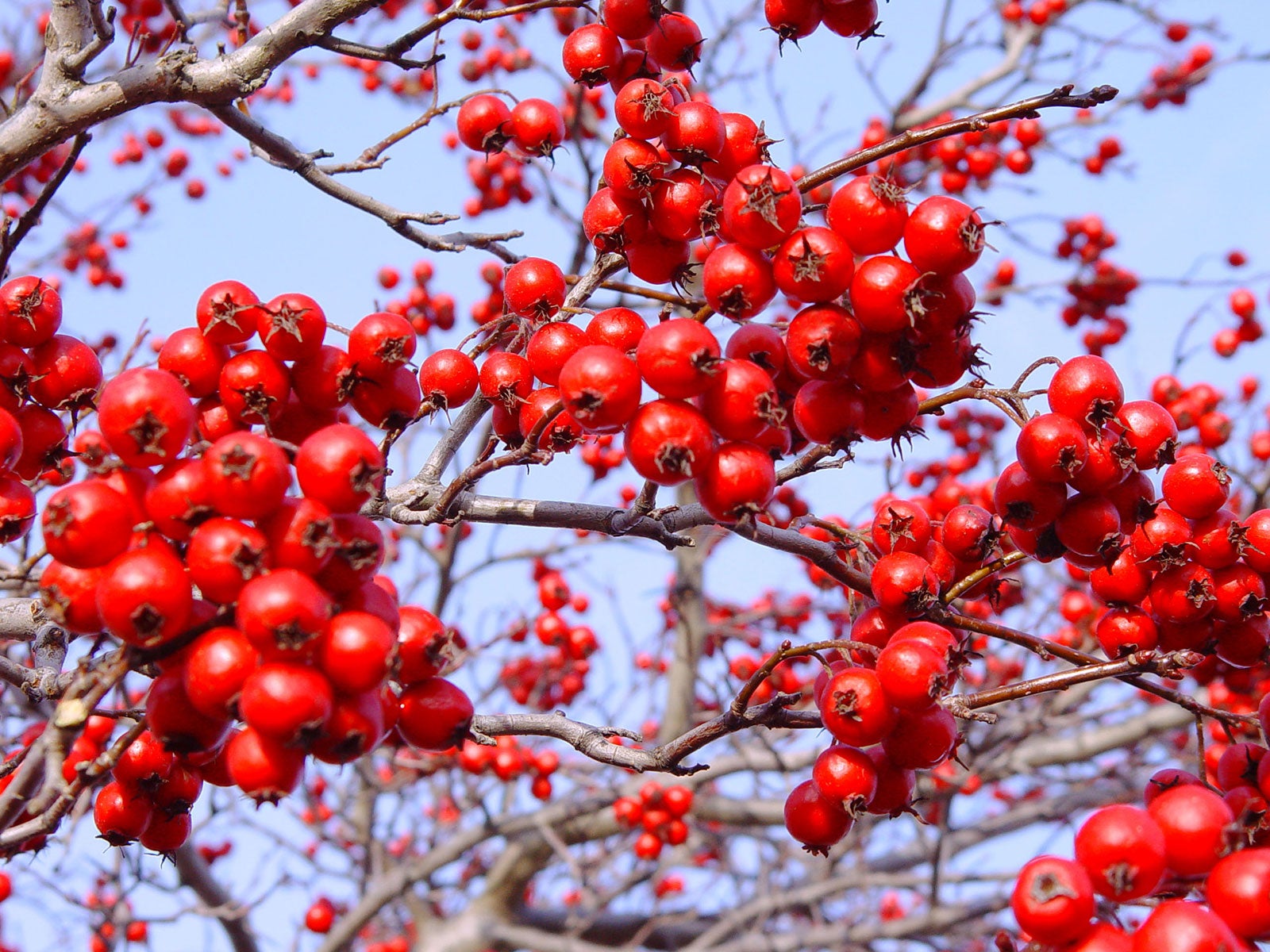Grow Green Hawthorn: Best Care For Crataegus Viridis


Quick Green Hawthorn Facts:
- Botanical name: Crataegus viridis
- Height: 20-30 feet (6-9 m)
- Spread: 20-30 feet (6-9 m)
- Sun exposure: Shady location for native specimen tree, full sun site for cultivar 'Winter King'
- Soil requirements: Dry to medium, well-drained soils
- Hardiness zones: USDA 4-8
- When to plant: Spring
Green hawthorn (or Crataegus viridis as it is also known) is a slow-growing native tree, dense with dark-green leaves and small thorns. It is a popular choice if you are interested in defensive shrubs for landscaping and its growth habit makes it perfect for hedges and screens.
These trees are considered ornamental because of the bronze and fall colors of the leaves. The bark is silver-gray and peels back to reveal orange bark inside. The tree produces showy, fragrant white blooms. The flowers evolve into large, bright red fruit (known as haws) that nestle on the bare branches all winter.
Best Care for Green Hawthorn
Light Conditions
The specimen plant that is native to North America prefers shade and grows best in partial shade to full shade. However, the popular 'Winter King' hawthorn tree cultivar needs more sun and grows best in direct sunlight. If you grow in full sun, you also minimize the possibility of disease.
Water & Fertilizer
Green hawthorns are extremely drought-resistant flowering trees, but they prefer regular irrigation. Generally, you shouldn't need to add fertilizer to maintain this native tree.
Temperature & Humidity
These trees are winter hardy in USDA hardiness zones 4 through 8. High humidity should be avoided, as it can cause disease.
Soil & Compost
Green hawthorns prefer well-draining soil that is moderately moist. So making sure soil drains well is essential before planting. That said, cultivar 'Winter King' adapts to a variety of soil conditions, including compacted and dry soil.
How to Plant a Green Hawthorn
Green hawthorn is not a difficult tree to grow. If possible, plant it in dry to medium, well-drained soils in full sunshine. Dig out a hole at least twice as wide as the root ball if you are growing it as a container plant. Remember to water well after planting. If you need to transplant a hawthorn hedge then do so before the growing season, preferably in early spring.
Gardening tips, videos, info and more delivered right to your inbox!
Sign up for the Gardening Know How newsletter today and receive a free copy of our e-book "How to Grow Delicious Tomatoes".
Green Hawthorn Pruning
The native tree grows with multiple trunks and its naturally rounded shape is attractive. However, the branches droop as they develop, so prune hawthorn trees in high-traffic areas. Doing this allows you to maintain a vase shape, or to allow vehicles or pedestrians to pass. Since the tree has long, sharp thorns, it's best to prune lower branches in certain areas. 'Winter King' has smaller thorns, so pruning for this reason is less necessary.
Problems, Pests & Diseases
Green hawthorns don’t do well with salty air. As with other types of hawthorn, these trees are vulnerable to a number of pests. These include aphids, tree borer insects, caterpillars, and leaf miners. They are also vulnerable to cedar-hawthorn rust, but less so than other hawthorn species. Fungal leaf spot, powdery mildew, canker and apple scab are occasional problems. Try to cut back affected areas and maintain good air flow to minimize issues.
Best Green Hawthorn Varieties
Crataegus viridis 'Winter King' is the most common variety of green hawthorn on the market. This excellent ornamental specimen grows many spring flowers which are larger and showier than the species plant. Plus, its thorns are smaller, and it develops relatively large fruits. 'Winter King' is also disease resistant.
Frequently Asked Questions
What Color Is 'Winter King' Hawthorn in the Fall?
'Winter King' green hawthorn has dark green leaves in summer. This foliage transforms into a blaze of bronze, gold and red tones in the fall.
Are 'Winter King' Hawthorn Berries Edible?
You can eat 'Winter King' hawthorn berries, since they are not toxic. Some people do make jellies from the haws. However, most experts recommend that they are probably better left to wildlife to consume.
Can I Propagate Green Hawthorn?
It is possible to grow green hawthorn trees by planting fruit seeds – but it takes time! Usually, the tree is purchased as a young plant from a garden center or specialist retailer.

Teo Spengler is a master gardener and a docent at the San Francisco Botanical Garden, where she hosts public tours. She has studied horticulture and written about nature, trees, plants, and gardening for more than two decades. Her extended family includes some 30 houseplants and hundreds of outdoor plants, including 250 trees, which are her main passion. Spengler currently splits her life between San Francisco and the French Basque Country, though she was raised in Alaska, giving her experience of gardening in a range of climates.
-
 My Homemade Orchid Fertilizer Always Brings More Blooms – Here's The Easy Recipe That Transforms Plants
My Homemade Orchid Fertilizer Always Brings More Blooms – Here's The Easy Recipe That Transforms PlantsScientist-turned-gardener Mary Ellen Ellis shares her tried-and-tested DIY orchid fertilizer recipe, plus more ingredients to try for healthy, happy plants.
By Mary Ellen Ellis
-
 Looking For Plants To Give You The Soft And Fuzzies? Try These 5 Fuzzy Leaf Plant Options
Looking For Plants To Give You The Soft And Fuzzies? Try These 5 Fuzzy Leaf Plant OptionsLovers of texture, drama, silver foliage and tactile plants will adore these special sensory garden additions. These fuzzy leaf plant options will leave you all aglow
By Susan Albert